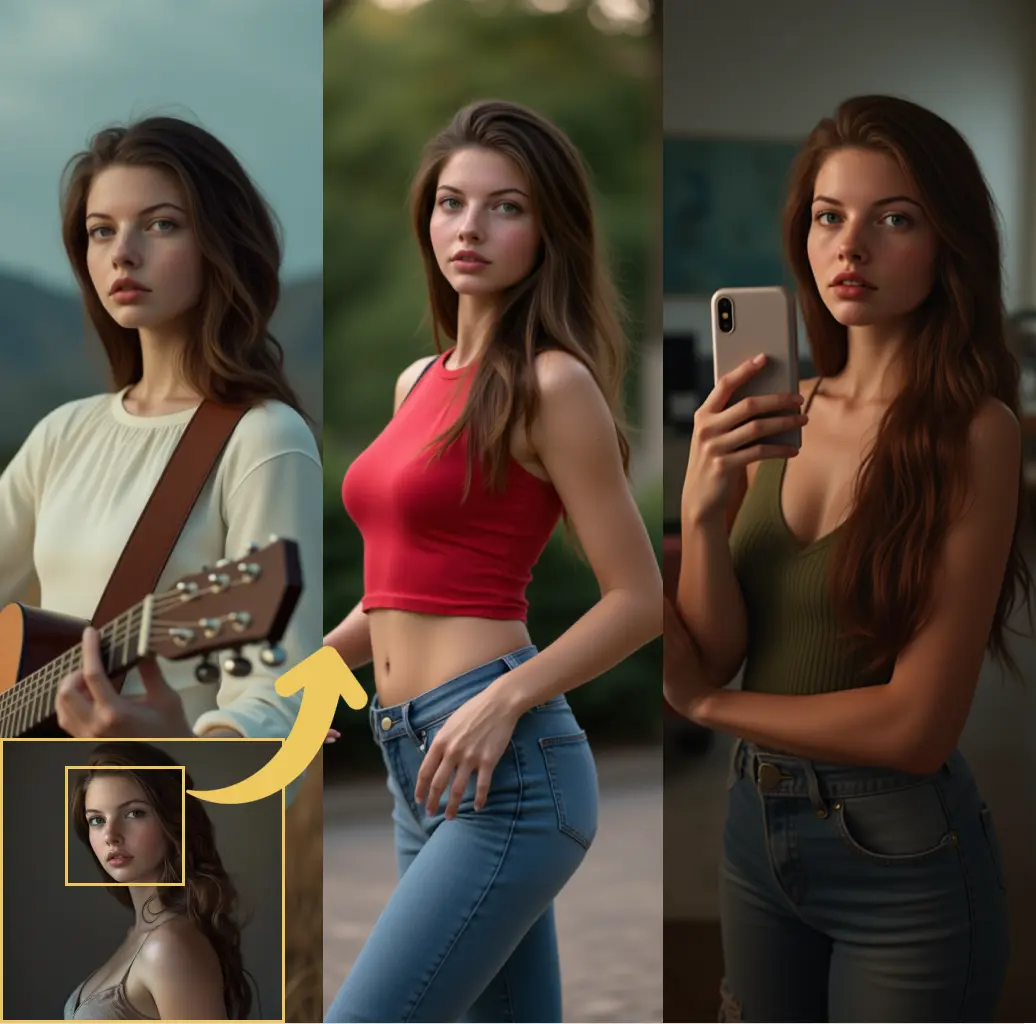ComfyUI Node: ATR Parse Batch v4.7.3
tri3d-atr-parse-batch
CategoryTRI3D
TRI3D-LC (Account age: 770days) Extension
tri3d-comfyui-nodes Latest Updated
2025-05-21 Github Stars
0.03K
How to Install tri3d-comfyui-nodes
Install this extension via the ComfyUI Manager by searching for tri3d-comfyui-nodes- 1. Click the Manager button in the main menu
- 2. Select Custom Nodes Manager button
- 3. Enter tri3d-comfyui-nodes in the search bar
Visit ComfyUI Online for ready-to-use ComfyUI environment
- Free trial available
- 16GB VRAM to 80GB VRAM GPU machines
- 400+ preloaded models/nodes
- Freedom to upload custom models/nodes
- 200+ ready-to-run workflows
- 100% private workspace with up to 200GB storage
- Dedicated Support
ATR Parse Batch v4.7.3 Description
Automate image batch parsing for AI-driven artistic segmentation tasks with advanced machine learning models.
ATR Parse Batch v4.7.3:
The tri3d-atr-parse-batch node is designed to facilitate the parsing of image batches for segmentation tasks, particularly in the context of AI-driven artistic applications. This node leverages advanced machine learning models to process images and extract meaningful segmentation data, which can be used for various creative purposes such as background removal, object isolation, or artistic transformations. By utilizing this node, you can efficiently handle large batches of images, ensuring consistent and accurate segmentation results. The primary goal of this node is to streamline the workflow for AI artists by automating the complex task of image parsing, thus allowing you to focus more on the creative aspects of your projects.
ATR Parse Batch v4.7.3 Input Parameters:
dataloader
The dataloader parameter is a crucial component that feeds batches of images into the node for processing. It is responsible for managing the input data, ensuring that images are correctly loaded and pre-processed before being passed to the model. The dataloader typically handles tasks such as image resizing, normalization, and batching, which are essential for maintaining the efficiency and accuracy of the parsing process. There are no specific minimum or maximum values for this parameter, as it is dependent on the dataset being used.
model
The model parameter refers to the pre-trained machine learning model used for parsing the images. This model is responsible for analyzing the input images and generating segmentation maps that highlight different parts or objects within the image. The choice of model can significantly impact the quality and speed of the parsing process, with different models offering varying levels of accuracy and computational efficiency. There are no specific minimum or maximum values for this parameter, as it is dependent on the model architecture and training.
input_size
The input_size parameter defines the dimensions to which input images are resized before being processed by the model. This resizing is crucial for ensuring that the model can handle images of varying sizes and maintain consistent performance. The input size should be chosen based on the model's requirements and the desired level of detail in the segmentation results. There are no specific minimum or maximum values for this parameter, but it should match the model's expected input dimensions.
args
The args parameter is a collection of additional arguments that can be used to customize the behavior of the node. These arguments may include options for output directory paths, whether to save logits, and other configuration settings that affect the parsing process. The specific options available in args can vary depending on the implementation and use case.
ATR Parse Batch v4.7.3 Output Parameters:
parsing_result
The parsing_result parameter is the primary output of the node, representing the segmentation map generated by the model. This map is a two-dimensional array where each pixel is assigned a label corresponding to a specific part or object in the image. The parsing result is crucial for applications that require precise object isolation or manipulation, as it provides a detailed breakdown of the image's contents.
parsing_result_path
The parsing_result_path parameter indicates the file path where the parsed segmentation map is saved. This output is essential for users who need to store and access the segmentation results for further processing or analysis. The path is typically generated based on the input image's name and the specified output directory.
logits_result
The logits_result parameter is an optional output that contains the raw logits generated by the model before the final segmentation map is produced. These logits provide additional information about the model's confidence in its predictions and can be useful for debugging or fine-tuning the parsing process. The logits result is saved as a separate file if specified in the args.
ATR Parse Batch v4.7.3 Usage Tips:
- Ensure that your input images are pre-processed correctly to match the expected input size of the model for optimal performance.
- Experiment with different models to find the one that best suits your specific artistic needs, balancing accuracy and computational efficiency.
- Utilize the
argsparameter to customize the output settings, such as specifying the output directory and whether to save additional data like logits.
ATR Parse Batch v4.7.3 Common Errors and Solutions:
Error: "CUDA out of memory"
- Explanation: This error occurs when the GPU does not have enough memory to process the input batch size.
- Solution: Reduce the batch size or use a model with lower memory requirements to alleviate memory constraints.
Error: "Invalid input size"
- Explanation: The input images do not match the expected dimensions required by the model.
- Solution: Adjust the
input_sizeparameter to ensure that images are resized correctly before being processed by the model.
Error: "File not found: parsing_result_path"
- Explanation: The specified output directory does not exist or is incorrect.
- Solution: Verify the
argsparameter to ensure that the output directory path is correctly specified and accessible.
ATR Parse Batch v4.7.3 Related Nodes
RunComfy is the premier ComfyUI platform, offering ComfyUI online environment and services, along with ComfyUI workflows featuring stunning visuals. RunComfy also provides AI Playground, enabling artists to harness the latest AI tools to create incredible art.

